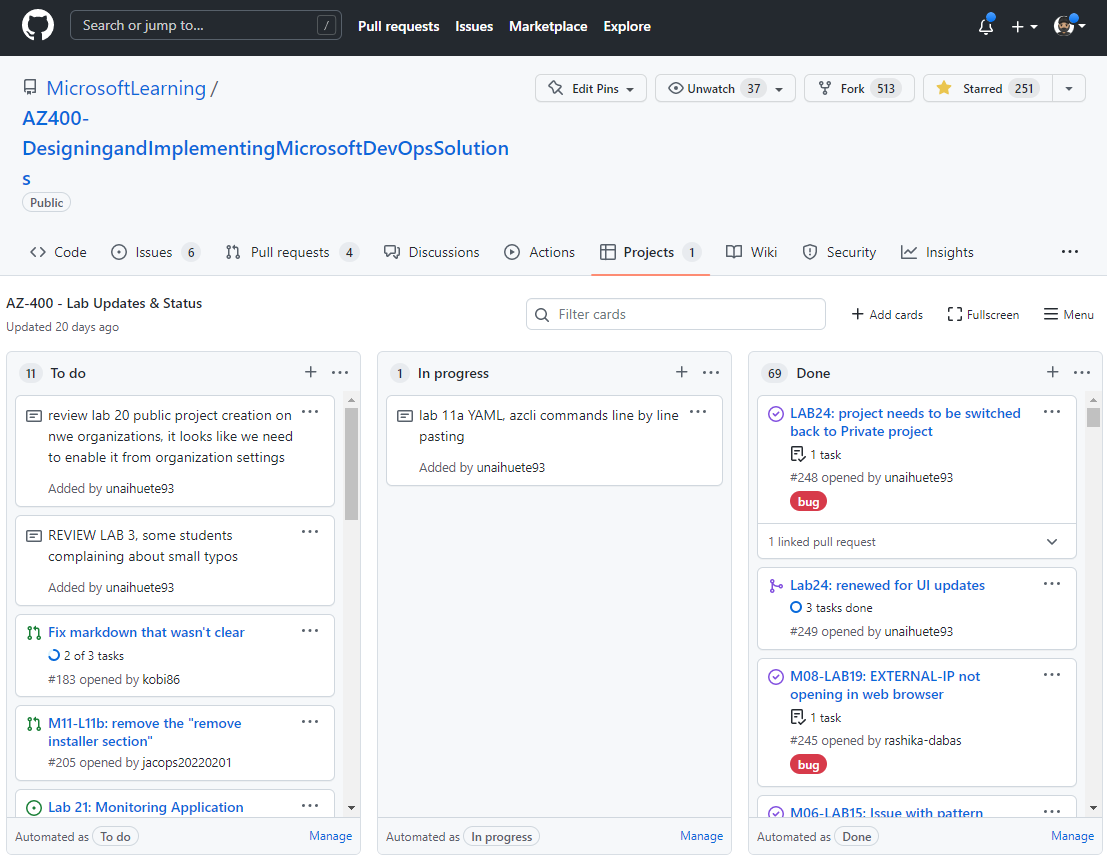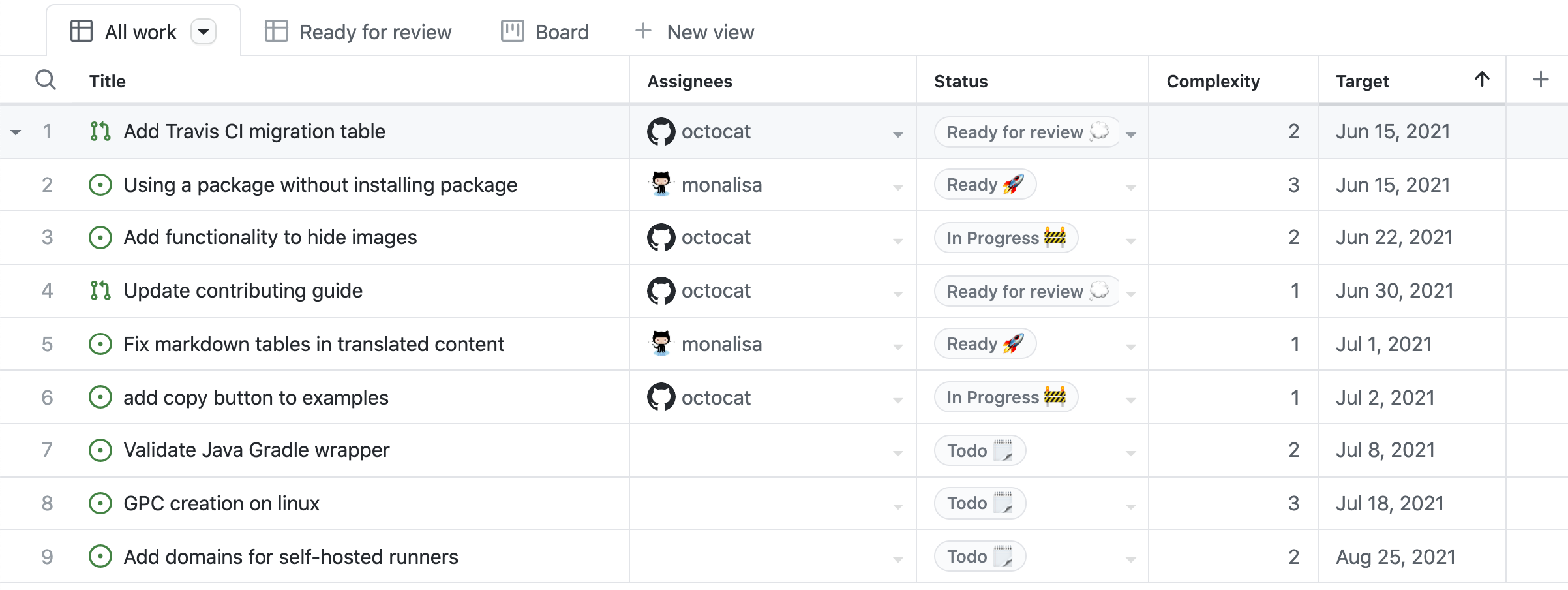Introduction to GitHub Projects and Project boards
Project Boards
During the application or project lifecycle, it's crucial to plan and prioritize work. With Project boards, you can control specific feature work, roadmaps, release plans, etc.
Project boards are made up of issues, pull requests, and notes categorized as cards you can drag and drop into your chosen columns. The cards contain relevant metadata for issues and pull requests, like labels, assignees, the status, and who opened it.

There are different types of project boards:
- User-owned project boards: Can contain issues and pull requests from any personal repository.
- Organization-wide project boards: Can contain issues and pull requests from any repository that belongs to an organization.
- Repository project boards: Are scoped to issues and pull requests within a single repository.
To create a project board for your organization, you must be an organization member.
It's possible to use templates to set up a new project board that will include columns and cards with tips. The templates can be automated and already configured.
| Templates | Description |
|---|---|
| Basic kanban | Track your tasks with: To do, In progress, and Done columns. |
| Automated kanban | Cards automatically move between: To do, In progress, and Done columns. |
| Automated kanban with review | Cards automatically move between: To do, In progress, and Done columns, with extra triggers for pull request review status. |
| Bug triage | Triage and prioritize bugs with: To do, High priority, Low priority, and Closed columns. |
For more information about Project boards, see:
- Creating a project board.
- Editing a project board.
- Copying a project board.
- Adding issues and pull requests to a project board.
- Project board permissions for an organization.
Projects
Projects are a new, customizable and flexible tool version of projects for planning and tracking work on GitHub.
A project is a customizable spreadsheet in which you can configure the layout by filtering, sorting, grouping your issues and PRs, and adding custom fields to track metadata.
You can use different views such as Board or spreadsheet/table.

If you change your pull request or issue, your project reflects that change.
You can use custom fields in your tasks. For example:
- A date field to track target ship dates.
- A number field to track the complexity of a task.
- A single select field to track whether a task is Low, Medium, or High priority.
- A text field to add a quick note.
- An iteration field to plan work week-by-week, including support for breaks.
For more information about Projects, see: